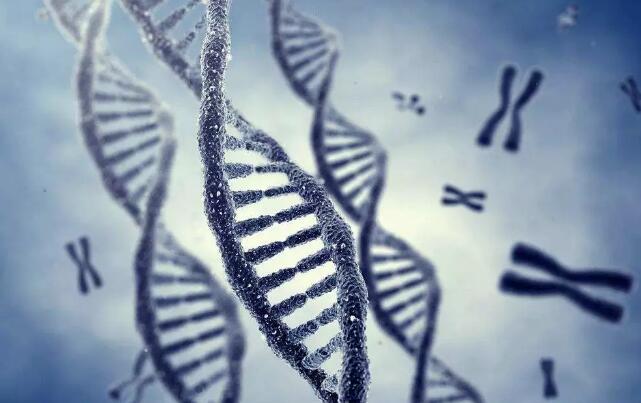脱氧核糖核酸(英文DeoxyriboNucleic Acid,缩写为DNA)是生物细胞内含有的四种生物大分子之一核酸的一种。DNA携带有合成RNA和蛋白质所必需的遗传信息,是生物体发育和正常运作必不可少的生物大分子。在A-level生物知识点学习中,Nucleic Acids和Protein synthesis是我们学习和考察的重点章节,今天A加未来小编就带大家解析一下这部分中的一些重点内容,希望对大家有所帮助。

Part 1:Nucleic Acids
DNA is the genetic material,which carries the genetic information.
Chromosome is a DNA molecule associate with the histone proteins.
Gene is the small section of DNA,which can be used to make the proteins.
■DNA
-Deoxyribonucleic acids
-Double helix structure with antiparallel strands。
-DNA is the polymer of DNA nucleotides(Polynucleotides)
■RNA
-Ribonucleic Acids
-Made up by RNA nucleotides.
-Messenger RNA:Copy the genetic information from DNA in the nucleus and bring the information to the ribosome in cytoplasm.
-Transfer RNA:Carry the specific amino acid to the ribosome.
-Ribosomal RNA:Form the subunits of the ribosome.
l Nucleotide contains a pentose sugar,a phosphate group and a nitrogen-containing base:

■Each nucleotide is linked to the next one by phosphodiester bonds between the phosphates of a nucleotide and pentose of another nucleotide to form the polynucleotide.
■Commentary base pairing:purine bases pair with pyrimidine bases(A-T,G-C)
-Adenine always pairs with thymine(uracil in RNA)via 2 hydrogen bonds.
-Guanine always pairs with cytosine via 3 hydrogen bonds.
■Two polynucleotide strands of the DNA is held by the hydrogen bonds between the complementary base pairing.
Part 2.DNA replication
■Occurs during interphase before the cell division to ensure each daughter cell get correct amount of genetic material.
■DNA replicates by semi-conservative replication:Each daughter DNA molecule contains one strand from parent DNA and one newly formed strand.
■Process:
1.The DNA double helix structure is unwound and unzipped by helicase.
2.Both separated DNA strands are used as the template strands.
3.Free nucleotides joined with templet strand and held by the hydrogen bonds between the complementary base pairs.
4.DNA polymerase catalyses the formation of the phosphodiester bonds between DNA nucleotides.
5.Due to the new DNA strands have to formed from 5’end to 3’end,and the DNA is antiparallel,one daughter DNA strand is formed discontinuously.The DNA segments are connected by the DNA ligase.
6.Two identical daughter DNA molecules are formed.
Part 3:Protein synthesis
■Two strands of DNA:sense strand(coding strand)+antisense strand(template strand)
■The genes are on the antisense strand
■Transcription(occurs in the nucleus):
1.Double strands of DNA are unwound and unzipped and the antisense strand is used as the template.
2.RNA nucleotides pair up with their complementary bases on the template strand via hydrogen bonds.
3.RNA polymerase catalyse the formation of the phosphodiester bonds between the RNA nucleotides.
4.The mRNA molecules is formed,and then the hydrogen bonds between the mRNA and DNA template strand are broken.
5.The DNA rewind into the double helix structure and mRNA molecule leaves the nucleus via nuclear pore.
■Translation:(occurs on the ribosome):
1.The mRNA moves into the cytoplasm and attached by ribosomes to provide the binding site for tRNA.
2.tRNA will brings the specific amino acids and bind with the mRNA and ribosome via the complementary base pairing between the codon and anticodon.
3.Then,second tRNA bring another amino acids and bind with the mRNA.
4.The peptide bond form between the adjacent amino acids.
5.The first tRNA detached from the its amino acids and he ribosome moves along the mRNA molecule,and a new tRNA with the amino acids will bind with the next codon.
6.The polypeptide is formed gradually until the ribosome reach the stop codon,then the formation of the polypeptide is completely.It will fold in the secondary and tertiary structure immediately.
7.The mRNA can be read by several ribosomes at the same time to produce many polypeptide.
以上就是A加未来小编关于A-level生物知识点中有关DNA和RNA部分的一些重点内容的总结和分析,希望能够帮助同学们更好的做好知识点的复习和巩固。更多A-level学习问题,欢迎随时咨询我们。
IB课程辅导,关注:http://www.ibedu.net/